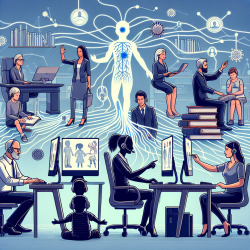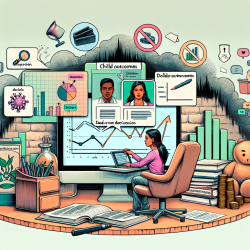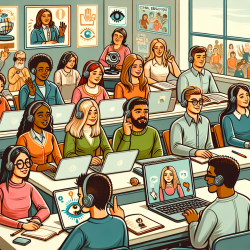In the ever-evolving field of speech-language pathology, integrating data-driven approaches is essential for improving outcomes, particularly in the realm of mental health for young people. A recent study titled A collaborative realist review of remote measurement technologies for depression in young people provides critical insights into how Remote Measurement Technologies (RMT) can be leveraged to enhance the detection, monitoring, and treatment of depression in adolescents and young adults. This blog aims to translate these findings into actionable strategies for practitioners, with a focus on implementing these technologies in a school setting.
Understanding Remote Measurement Technologies (RMT)
RMT encompasses digital tools such as smartphones and wearables that collect real-time data on an individual's daily activities, behaviors, and physiological states. This data can be used to infer mood, stress levels, sleep patterns, and other factors indicative of mental health status. The review highlights the potential of RMT to provide more objective and continuous monitoring of depression symptoms compared to traditional self-report methods, which are often subject to recall and mood-state biases.
Key Findings from the Study
The study synthesized data from 104 sources and identified several key outcomes:
- Types of RMT: Smartphones and associated apps are the most prevalent and preferred tools among young people.
- Data Collection: Both passive (e.g., sensors) and active (e.g., self-reports) data collection methods have their merits. A combination of both is recommended for a holistic approach.
- Indicators of Depression: Variability in sleep patterns, changes in mobility, smartphone use, and social communication were significant indicators of depression severity.
- Clinical Utility: RMT showed promise in screening, self-monitoring, and providing feedback to healthcare professionals, though its effectiveness in relapse prevention remains inconclusive.
Practical Implementation Strategies
For practitioners working in schools, the following strategies can help integrate RMT into their practice:
- Utilize Smartphone Apps: Encourage students to use mental health apps that offer both passive and active data collection. Ensure the apps are user-friendly and have high engagement rates.
- Monitor Sleep Patterns: Use wearables to track sleep metrics such as sleep latency, duration, and variability. These metrics can provide early warning signs of depression.
- Incorporate Feedback Mechanisms: Regularly review the data collected from RMT with students and provide personalized feedback. This can enhance emotional self-awareness and encourage help-seeking behaviors.
- Address Privacy Concerns: Ensure transparent, informed consent processes and give students control over their data. Address any ethical concerns to build trust.
Recommendations for Future Research and Practice
The study underscores the need for further research in several areas:
- Investigate the unintended outcomes of real-time monitoring.
- Examine the predictive capabilities of RMT data features for depression relapse.
- Explore the impact of RMT on treatment timelines and depression outcomes.
- Conduct implementation science studies to overcome integration challenges in various contexts.
Practitioners are encouraged to stay updated with ongoing research and consider participating in studies to contribute to the evidence base.
In conclusion, RMT offers a promising avenue for improving mental health outcomes in young people. By integrating these technologies into practice, speech-language pathologists can enhance their ability to monitor, detect, and manage depression, ultimately fostering better mental health in school settings.
To read the original research paper, please follow this link: A collaborative realist review of remote measurement technologies for depression in young people.










